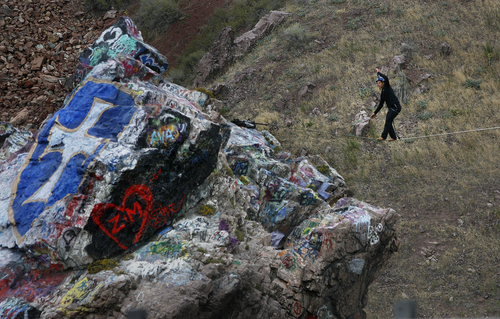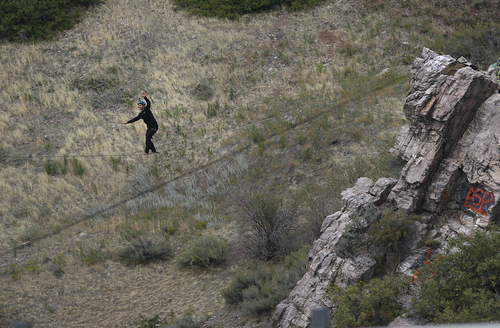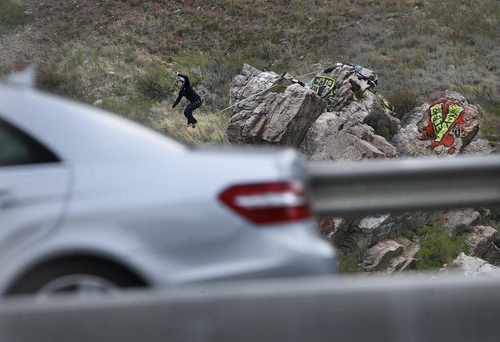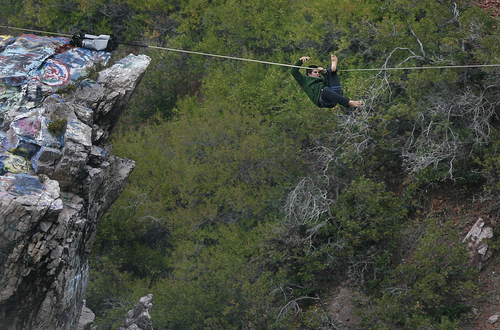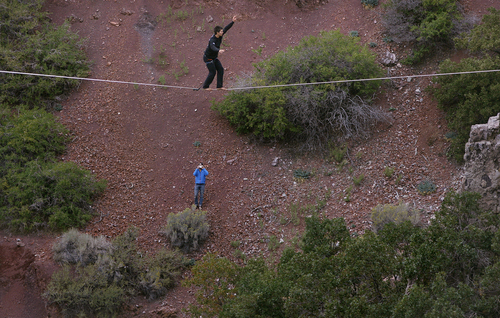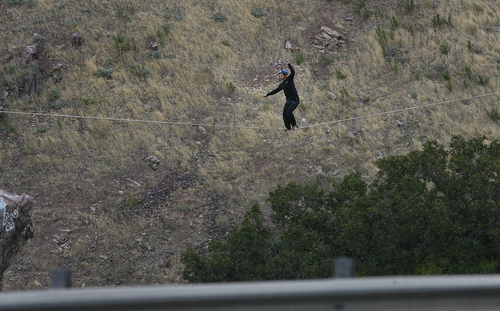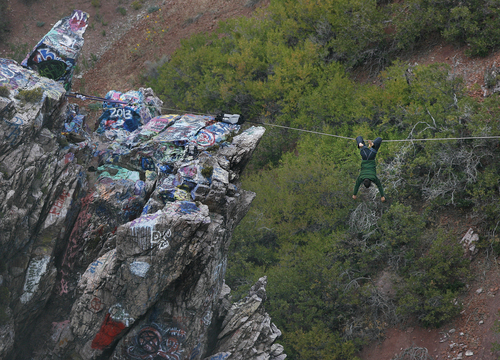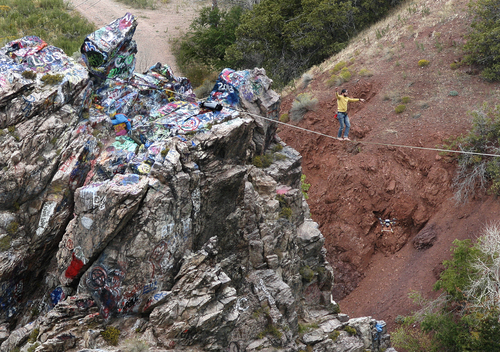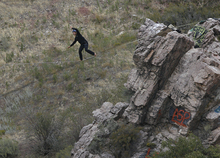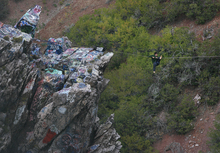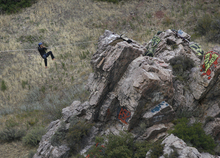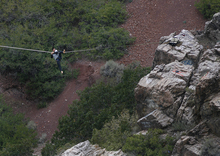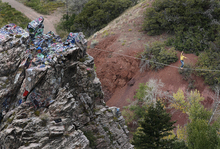This is an archived article that was published on sltrib.com in 2013, and information in the article may be outdated. It is provided only for personal research purposes and may not be reprinted.
It's 189 feet to Suicide Rock.
Cameron Kolk's path is narrow — a 1-inch strand of webbing — but not straight. It bows and bobs as he steps over a 120-foot drop off above crags and shards of graffiti.
From a side view, highlining looks, literally, like a walk on the crazy-stupid line. A small crowd of passers-by gawk from the Bonneville Shoreline Trail, and members of a public works crew near Parleys Creek cross their arms and shake their heads.
"I'm here every single day, and I've never seen anything like this," says Roger Kelsey, a city water worker.
But for Kolk, these are just the latest steps in a longer route. He took up slacklining just over a year ago, closer to the ground in San Diego. He quickly worked his way up to new heights. Two weeks ago, he moved to Salt Lake City to create Slack Source Magazine with a group of friends and appear in action sports films.
There aren't a lot of chances in life to move to a new city, launch a web start-up and try to become a star in a sport that barely exists. You kind of have to be 22, and you kind of have to know some people.
Enter Ryan Robinson, a 30-year-old highliner who recently shot a Ford commercial in Moab with Youtube-renowned director Devin "Super Tramp" Graham. On Thursday, Robinson and Kolk are highlining Suicide Rock with filmmaker Bruce Wilson, of Three Peaks Films, to capture footage to promote a slacklining series they're preparing for Epic TV, an online extreme sports channel. It is their second day at the rock, Robinson said. The location seemed unique and perfect for film: a dramatic natural setting, vibrantly adorned with spray paint and bounded on three sides by interstate highways.
Highlining stunts also attract a lot of attention in town. Police have stopped by. Robinson estimates they've received about 25 calls so far — "but they're cool." Robinson and Kolk say they play it safe. They wear harnesses connected to the line for every attempt, and the anchors can support up to 10,000 pounds.
But that mental security is only so helpful up on the line. Kolk gazes forward, at the opposing anchor. Looking down is not helpful, he says. He creeps out on the line, toe to heel, toe to heel.
After a few steps, he teeters and drops as the line rattles and shakes. He pauses and monkeys his way back to his feet.
"It's primal survival mode," he says. "You're lunging as if you're trying to catch the line for your life. You feel your stomach drop."
This happens a couple more times.
Then Kolk is in his zone. He moves forward again, toe to heel, toe to heel.
"It seems like the anchor is never getting closer," he later says.
But it is. Up on the trail, spectators start to clap.
Toe to heel, toe to heel.
Shouts of encouragement trickle down the canyon to the painted peak of Suicide Rock. Kolk is almost there.
After six long minutes, his feet are on stone.
Cheers ring out over the highway traffic, and Kolk can look down.



